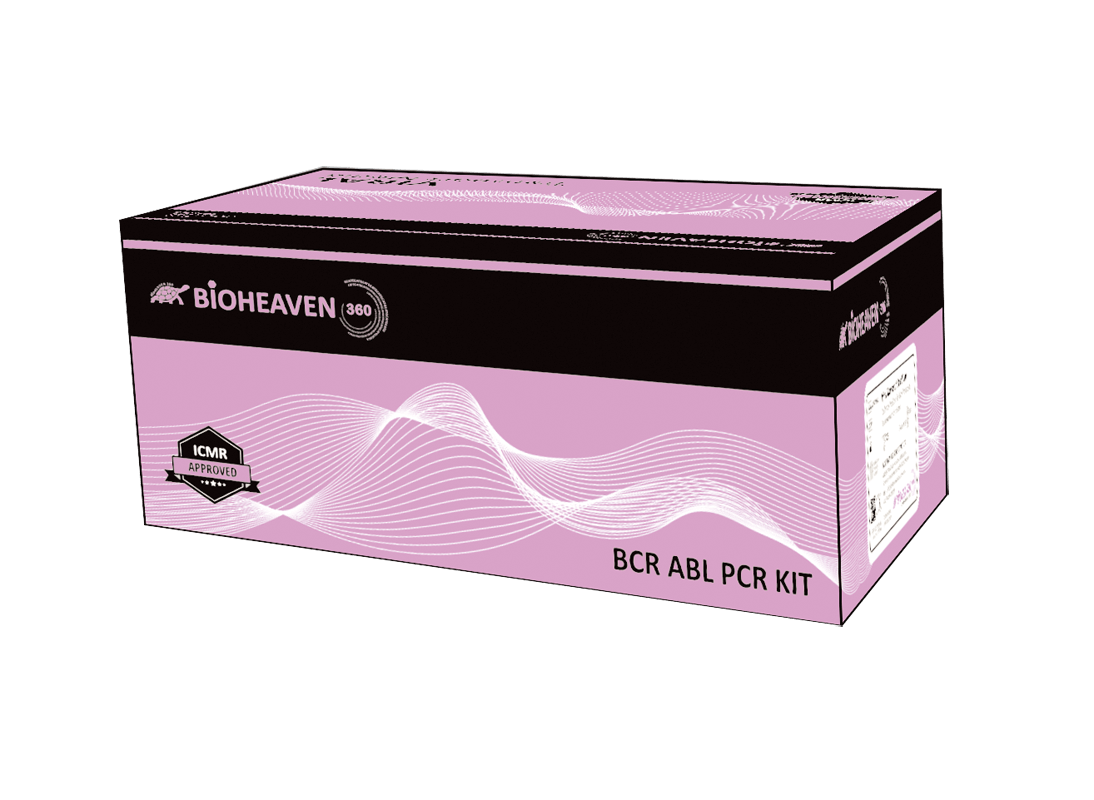
BCR ABL Detection
1copy™ BCR-ABL qPCR Kit uses 1copy Probe Technology to conveniently and rapidly detect multiple mRNA targets in just one single step while showing high precision and accuracy in quantitatively testing for CML(Chronic Myelocytic Leukemia). Our kit is able to stably detect and measure BCR-ABL1 at a level of 0.0032% and differentiate out lower CMR(Complete Molecular Response) with 0.0007% IS. 1copy™ BCR-ABL qPCR kit not only has a short total testing time but also is very convenient due to the combination of reverse transcription and amplification into a single step.
1copy™ Probe Technology: Sensitive And Consistent
1copy™ Probe, the core technology of 1drop Inc. molecular diagnostics, is a chimeric probe composed of DNA and RNA, and its degradation efficiency is increased by the endonuclease activity of our specially designed RNaseHII6, allowing for higher fluorescence intensity and consequently, a more accurate quantification. RNaseHII6 is specifically developed to be strongly resistant to heat and is therefore optimized for hot-start PCR, producing a higher probe degradation efficiency. With this unique technology, 1copy™ Probe can stably and accurately detect mRNA at the single-molecule level.
Specification
- # of Steps: 1 Step
- LOD: 4pg(~8 copies, >95% CI), MR 4.77(MR value)
- Target: 4 types of fusion mRNA(b3a2, b2a2, e1a2, e19a2)
- Contents:
- Master Mix: 1 ea.
- Primer Probe Mix: 1 ea.
- Standard(ABL): 3 ea.
- Standard(BCR-ABL): 4 ea.
- Control: 2 ea.
- DEPC DW: 1 ea.
Fast and Convenient
1copy™ supports the detection of multiple target genes in a single step to save time and money.
- Turn-around Time: 2 hr. 25 min.
- Hands-on Time: 20 min.
BCR-ABL, sometimes also called as a fusion gene, is a mutation that is formed by the combination of two genes, known as BCR and ABL. The BCR (breakpoint cluster region) gene is normally on chromosome 22 and ABL (encoding a non-receptor tyrosine kinase) gene on chromosome 9.
- Fusion gene happens when a piece of chromosome 9 including the part of the ABL gene moves over to chromosome 22 and the part of the ABL gene attaches to the BCR gene. The merged gene is called the BCR-ABL fusion gene.
- The changed chromosome 22, which contains the BCR-ABL gene, is called the Philadelphia chromosome because that's the city where researchers first discovered it.
- The BCR-ABL gene is not the type of mutation that is inherited from parents. It is a type of somatic mutation.
The BCR-ABL gene condition occurs in patients with certain types of leukemia, a cancer of the bone marrow and white blood cells. BCR-ABL is found in almost all patients with a type of leukemia called chronic myeloid leukemia (CML). The BCR-ABL gene is also found in some patients with a form of acute lymphoblastic leukemia (ALL) and rarely in patients with acute myelogenous leukemia (AML).
Certain cancer medicines are especially effective in treating leukemia patients with the BCR-ABL gene mutation.
The Test
BCR-ABL test is most often used to diagnose or rule out chronic myeloid leukemia (CML) or a specific form of acute lymphoblastic leukemia (ALL) called Ph-positive ALL
The test may also be used to:
- See if cancer treatment is effective.
- See if a patient has developed a resistance to certain treatment. That means a treatment that used to be effective is no longer working.
The kit is based real-time PCR amplification and detection of BCR-ABL1 fusion transcripts and the ABL transcript. It has two-step protocol in which total RNA is reverse-transcribed, and the generated cDNA is amplified by PCR using a pair of specific primer-probe of BCR-ABL1 gene along with controls in the whole diagnostic process.
When is a BCR-ABL genetic test recommended?
A doctor may need a BCR-ABL test if the patient has symptoms of chronic myeloid leukemia (CML) or Ph-positive acute lymphoblastic leukemia (ALL).
What do the results mean?
The presence of BCR-ABL gene, as well as an abnormal amount of white blood cells, indicates chronic myeloid leukemia (CML) or Ph-positive, acute lymphoblastic leukemia (ALL).
In case a patient is being treated for CML or Ph-positive ALL, the results may show:
- The amount of BCR-ABL in blood or bone marrow is increasing. This may mean that treatment is not working and/or patient has become resistant to a certain treatment.
- The amount of BCR-ABL in blood or bone marrow is decreasing. This may mean the treatment is working.
- The amount of BCR-ABL in blood or bone marrow has not increased or decreased. This may mean the disease is stable.
- LOD: 4pg(~8 copies, >95% CI), MR 4.77(MR value)
- Target: 4 types of fusion mRNA(b3a2, b2a2, e1a2, e19a2)
- Contents:
- Master Mix: 1 vial
- Primer Probe Mix: 1 vial
- Standard(ABL) and BCR-ABL): 1 Vial
- Control: 2 vials
- DEPC DW: 1 vial
